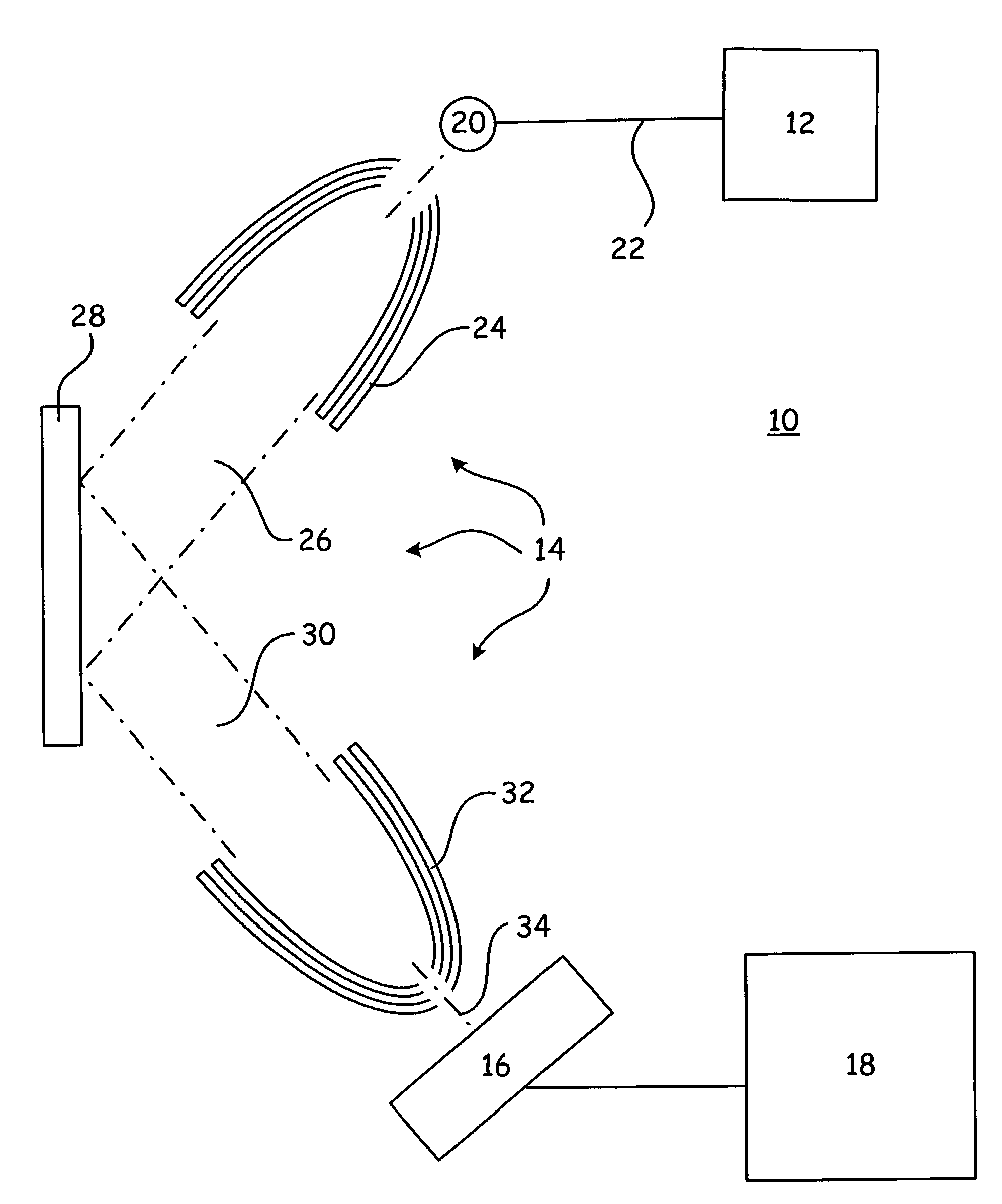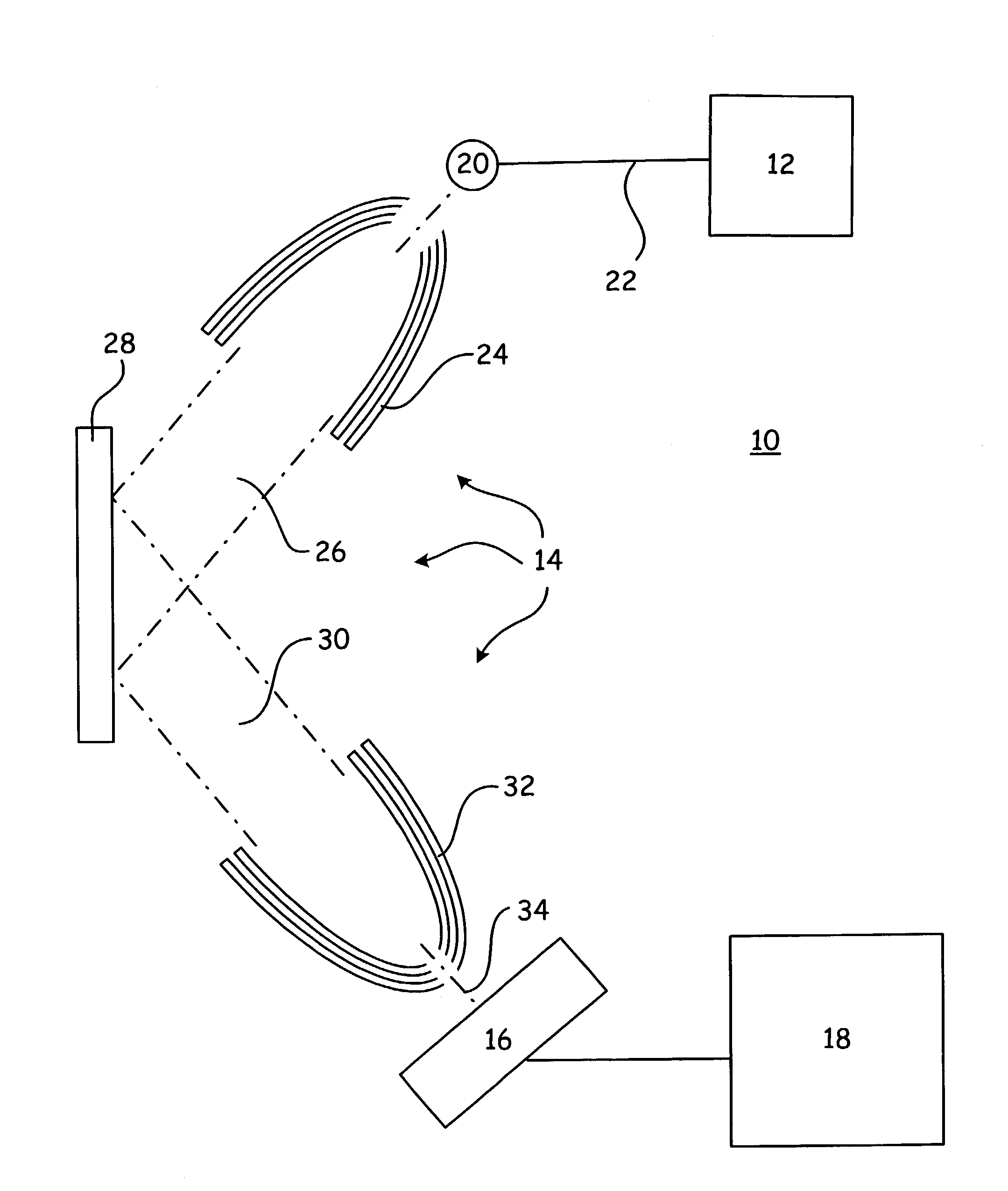Light element measurement
a light element and measurement technology, applied in the field of material analysis, can solve the problems of light elements, relatively lighter molecular weight elements, otherwise referred to, and the limited solid angle that can be collected in wavelength dispersive x-ray methods, so as to improve the light element performance of a system, improve the efficiency of light element measurement, and improve the effect of light element performan
- Summary
- Abstract
- Description
- Claims
- Application Information
AI Technical Summary
Benefits of technology
Problems solved by technology
Method used
Image
Examples
Embodiment Construction
[0016]With reference now to the figure, there is depicted a functional block diagram of a system 10 according to the present invention. The system 10 may be scanning electron microscope in which the elements as described are incorporated, or a standalone spectrometer, such as an energy dispersive x-ray fluorescent spectrometer, in which various elements have been added. The major parts of the system 10 are an exciter 12, filter system 14, detector 16, and analyzer 18. The filter system 14 preferably includes at least a collimator 24 and reflector 28, and optionally includes a second collimator 32. One function of the system 10 is to detect and quantify elements, and more especially light elements, in a sample 20.
[0017]An electron beam or x-ray beam 22 stimulates the emission of x-rays from a small spot on a sample 20 that contains one or more light elements, such as nitrogen, carbon, and oxygen. X-rays emitted from the sample 20 are collected by a collimator 24, which is preferably ...
PUM
| Property | Measurement | Unit |
|---|---|---|
| molecular weight | aaaaa | aaaaa |
| thick | aaaaa | aaaaa |
| thick | aaaaa | aaaaa |
Abstract
Description
Claims
Application Information
 Login to View More
Login to View More - R&D
- Intellectual Property
- Life Sciences
- Materials
- Tech Scout
- Unparalleled Data Quality
- Higher Quality Content
- 60% Fewer Hallucinations
Browse by: Latest US Patents, China's latest patents, Technical Efficacy Thesaurus, Application Domain, Technology Topic, Popular Technical Reports.
© 2025 PatSnap. All rights reserved.Legal|Privacy policy|Modern Slavery Act Transparency Statement|Sitemap|About US| Contact US: help@patsnap.com


